Suchergebnisse für "Factsheet%3A Energietechnologien gestalten%2C die f%C3%BCr alle sinnvoll und nutzbar sind"
Energy Efficiency of the Internet of Things - Technology and Energy Assessment Report (2016)
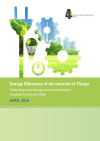
Herausgeber: IEA - 4E EDNA
Englisch, 66 Seiten
Downloads zur Publikation
IEA-SHC Task 50: Advanced Lighting Solutions for Retrofitting Buildings - 2014 Highlights (2015)

Herausgeber: IEA-SHC Task 50
Englisch, 3 Seiten
Downloads zur Publikation
Life Cycle Inventories and Life Cycle Assessments of Photovoltaic Systems
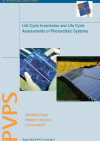
IEA-PVPS Task 12, April 2015
Herausgeber: IEA Photovoltaic Power Systems Programme
Englisch, 86 Seiten
Downloads zur Publikation
Bioenergy: Counting on Incentives (2010)

Response to the paper by D. Searchinger et. al., Letters to Science. 327 (2010), 1199 - 1200.
Pingoud K., Cowie A., Bird N., Gustavsson L., Rüter S., Sathre R., Soimakallio S., Türk A., Woess-Gallasch S.
Englisch
Emissions from bioenergy (2010)
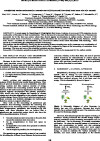
Improved accounting options and new policy needs. In Proceedings of the 18th European Biomass Conference and Exhibition, Lyon.
Bird D. N., Cowie A., Frieden D., Gustavsson L., Pena N. Pingoud K., Rüter S., Sathre R., Soimakallio S., Türk A., Woess-Gallasch S., Zanchi G.
Englisch, 5 Seiten
Downloads zur Publikation
Bioenergy - The Impact of Indirect Land Use Change (2010)

Summary and Conclusions from the IEA Bioenergy ExCo63 Workshop
Englisch
Economics of retrofit air pollution control technologies (Nalbandian, 05-2006)

Englisch
Prospects for coal and clean coal technologies in the Czech Republic (Mills, 01-2007)

Englisch
International funding sources for major coal investment projects (Hill, 02-2006)

Englisch
Innovative Energy Technologies in Austria - Market Development 2016
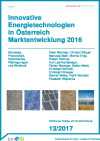
Biomass, photovoltaic, solar thermal collectors, heat pumps and wind power
13/2017
Peter Biermayr, Christa Dißauer, Manuela Eberl, Monika Enigl, Hubert Fechner, Kurt Leonhartsberger, Florian Maringer, Stefan Moidl, Christoph Schmidl, Christoph Strasser, Werner Weiss, Patrik Wonisch, Elisabeth Wopienka
Herausgeber: BMVIT
Deutsch, 242 Seiten
Downloads zur Publikation
IEA: Co-utilisation of Biomass with Fossil Fuels

Summary and Conclusions from the IEA Bioenergy ExCo 55 Workshop
Englisch
Clean coal technologies for a carbon-constraines world (Kessels/Bakker/Clemens, 05-2007)

Englisch
Forschungsforum 1/2011 erschienen
Zum Thema Smart Grids Pionierregion Oberösterreich - Strategien für ein zukunftsfähiges Energiesystem mit maximalem Einsatz erneuerbarer Ressourcen.
Smart Gas Grids - Smart Cities Projektforum 2011
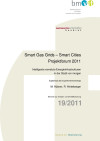
Intelligente vernetzte Energieinfrastrukturen in der Stadt von morgen
Schriftenreihe
19/2011
M.Hübner, R. Hinterberger
Herausgeber: BMVIT
Deutsch, 92 Seiten
Downloads zur Publikation
Smart Grids - Geförderte Projekte (NE2020, 4.AS)

Zusammenstellung ausgewählter Projekte der 4. Ausschreibung Neue Energien 2020
Dr. Herbert Greisberger
Herausgeber: BMVIT
Deutsch, 18 Seiten
Downloads zur Publikation
Project Synopses Decentralised Generation and Smart Grids
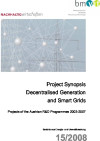
Projects of the Austrian R&D Programmes 2003-2007
15/2008
Herausgeber: BMVIT
Deutsch, 108 Seiten
Downloads zur Publikation
Weltweite Entwicklungen in der Photovoltaik
Der IEA PVPS Trends Report gibt einen globalen Überblick über Photovoltaik-Technologieentwicklungen, den Markt sowie politische Rahmenbedingungen.
IEA Fortschrittliche Brennstoffzellen (AFC) Task 33: Stationäre Brennstoffzellen
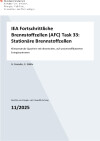
Klimaneutrale Quartiere mit dezentralen, auf wasserstoffbasierten Energiesystemen
Schriftenreihe
11/2025
G. Simader, E. Sibille
Herausgeber: BMK
Deutsch, 42 Seiten
Downloads zur Publikation
IEA Bioenergy Task 33: Bericht der Arbeitsperiode 2010-2012
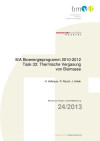
Thermische Vergasung von Biomasse
Schriftenreihe
24/2013
H. Hofbauer, R. Rauch, J. Hrbek
Herausgeber: BMVIT
Deutsch, 207 Seiten
Downloads zur Publikation
IEA Bioenergy Task 40: Bericht der Arbeitsperiode 2010-2012
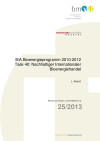
Task 40: Nachhaltiger Internationaler Biohandel
Schriftenreihe
25/2013
L. Kranzl
Herausgeber: BMVIT
Deutsch, 324 Seiten
